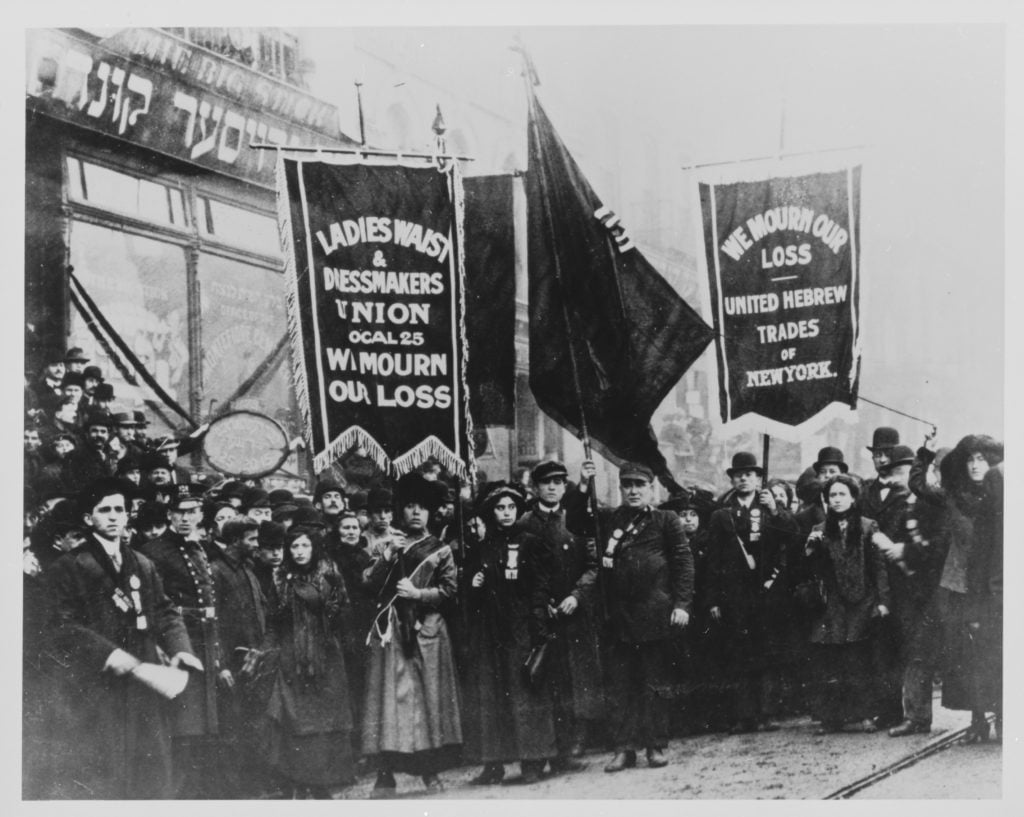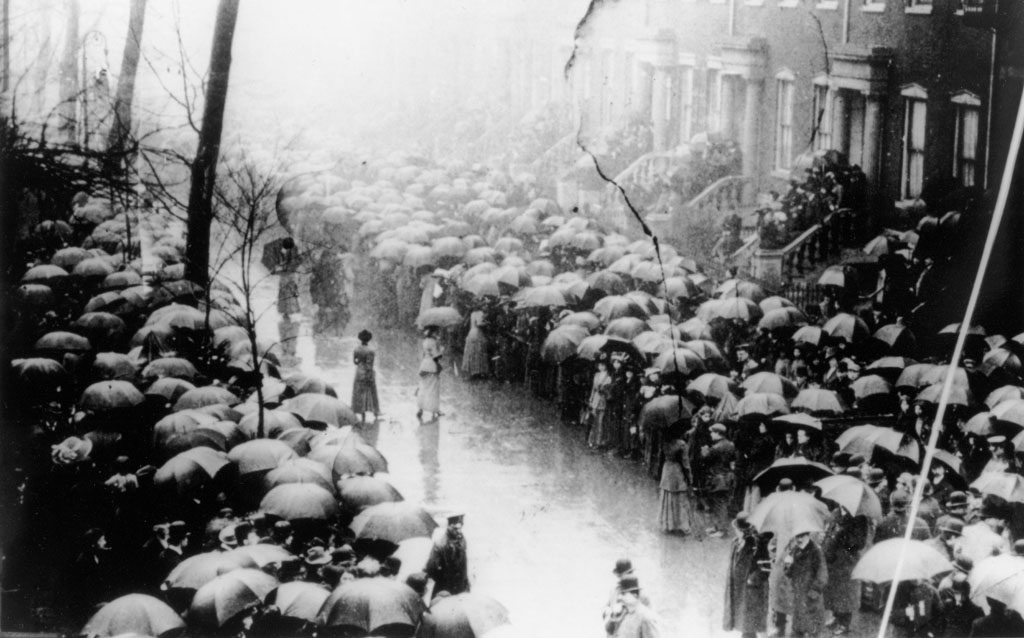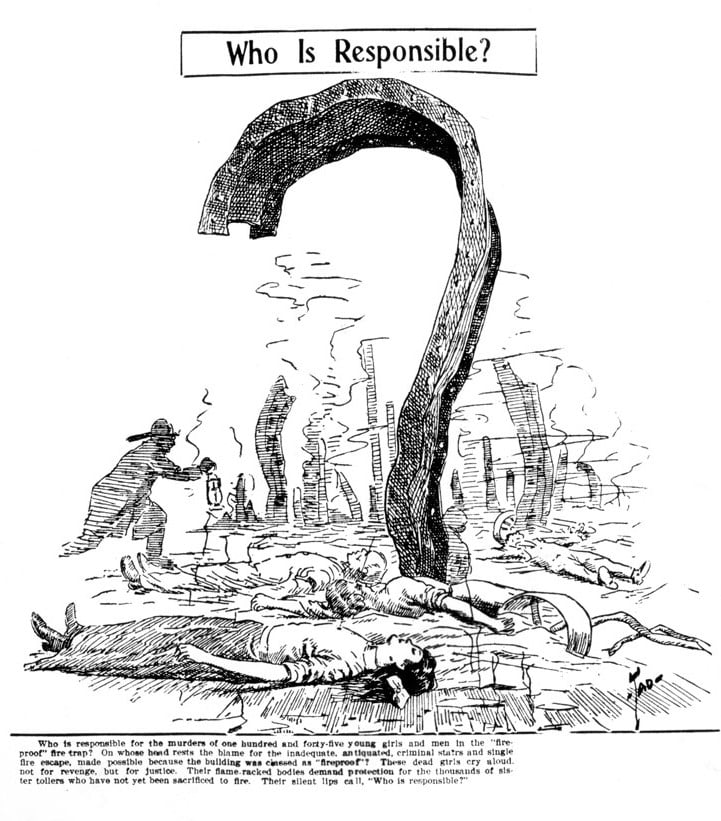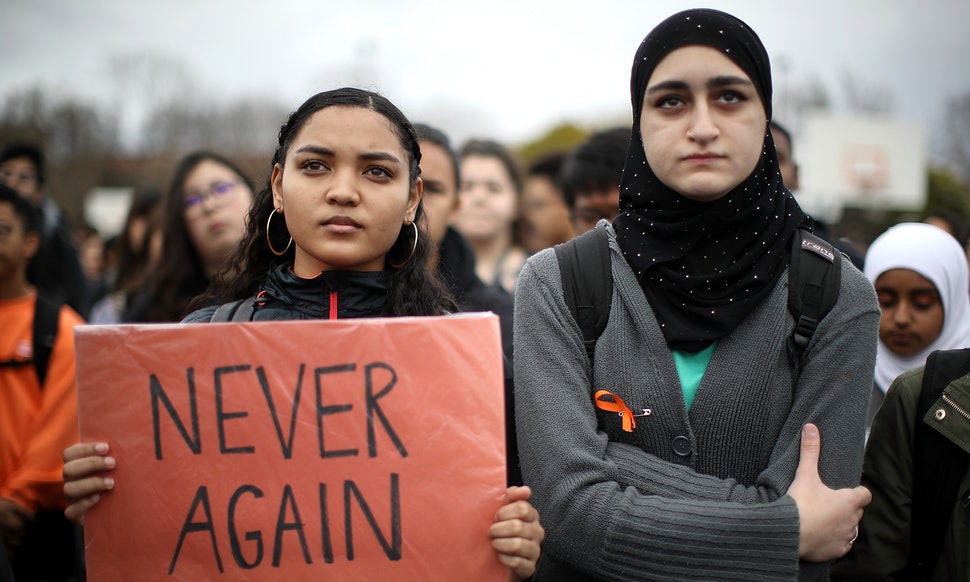Blog Archive
#NeverAgain and the Fighting Legacy of the Triangle Factory Fire

Protest after the Triangle Shirtwaist Factory fire, 4/5/1911. National Archives, General Records of the Department of Labor
This weekend, the whole world prepares to either watch or join in the March For Our Lives, with over 800 protests taking place over six continents. It also happens to be the 107th anniversary of the Triangle Shirtwaist Factory fire, which occurred on March 25, 1911.
On the surface, these two events have little in common. March For Our Lives is spurred by the mass shooting at Stoneman Douglas High School in Parkland, Florida on February 14, 2018 that claimed the lives of 17 students and teachers. The Triangle Shirtwaist Factory fire of 1911 started when a lit cigarette accidentally ignited a pile of rags at a garment factory, resulting in the deaths of 146 people, either from asphyxiation or from jumping from the 10-story building to escape the flames. Both horrifying, senseless tragedies, but without any common details.
The more I researched the aftermath of the Triangle Shirtwaist Factory Fire, however, the more I saw similarities.
When people discuss the 1911 fire these days, they might say something like, “Over a hundred people died in this really awful, preventable way, and people were so horrified it changed workplace safety laws forever.” As though the event happened in a vacuum, and was in itself the catalyst for change, when that is simply not true. And saying so does a disservice to all those, the workers still endangered and the families of those harmed, who organized themselves and fought for change.

The Triangle Shirtwaist Factory fire in Greenwhich Village, March 25, 1911
On April 5,, 1911, just over a week after the fire, union organizers and workers held a march down New York City’s Fifth Avenue. Except they called it a funeral procession. Reports vary, but it’s estimated between 80,000-120,000 people marched for over six hours, with 300,000-400,000 people observing. Such a great number of people do not come out to mourn a single tragedy, no matter how large a tragedy it was. Something bigger was happening.
The people were protesting decades of workplace hazards and general disregard for the health and safety of workers, resulting in countless lives lost or permanently maimed. Now, in hindsight, we’re able to look at those lax laws and wonder how anyone could have allowed such things to occur. What little fire safety laws that existed were rarely enforced. Building owners could decide to save on cost by not installing fire escapes, fire sprinklers, or outward opening doors – and still were able to say the building was “fireproof.” Not to mention how unsanitary and hazardous most workplaces, often utilizing toxic chemicals or heavy machinery, were allowed to function free from enforced regulations.
Many lives were lost before March 25, 1911, due to corporate and government corruption waving away safety and health concerns. Part of the problem was many who were injured or killed in workplace accidents were young people – children – and immigrants who did not speak English and weren’t informed of the dangers of their job. They were people who did not know how to speak out in defense of their own lives. A majority of the people killed at the Triangle Shirtwaist Factory were young Jewish and Italian immigrant girls, for example.

April 5th funeral procession, Kheel Center
On the day of the funeral procession, socialite and reformer Martha Bensley Bruere watched from her window. Of the display, she said:
“There have been no carriages, no imposing marshals on horseback; just thousands and thousands of working men and women carrying the banners of their trade through the long three-mile tramp in the rain. Never have I seen a military pageant or triumphant ovation so impressive; for it is not because 146 workers were killed in the Triangle shop – not altogether. It is because every year there are 50,000 working men and women killed in the United States – 136 a day; almost as many as happened to be killed together on the 25th of March; and because slowly, very slowly, it is dawning on these thousands on thousands that such things do not have to be!”
This sentiment reminds me of another quote, from legendary labor activist and community organizer Mary Harris “Mother” Jones: “Pray for the dead, and fight like hell for the living.” I’m also reminded of the succinct yet rallying cry of our new wave of gun control reformers, who know too well the similar statistics of gun deaths that occur in this country every day: “#NeverAgain.”
But a single day’s protest, we all know, is not enough to exact change. It must be carried out at the highest levels of government. According to the U.S. Department of Labor, “The sorrow and anger of the community were too great… to be dissipated in a demonstration.” Prior to the funeral procession, civic leaders, religious figures, teachers, and reformers held a mass assembly to discuss what change needed to occur. “Out of that assembly emerged a Committee on Safety, which served as a clearinghouse of information on fire safety, and more importantly, because an effective political force.” The Committee was able to pass a bill in June 1911 creating the Factory Investigating Commission, whose sole purpose was “to investigate the conditions under which manufacturing is carried on.”

Caption reads: “Who is responsible? Who is responsible for the murders of one hundred and forty-five young girls and men in the “fire proof” fire trap? On whose head rests the blame for the inadequate, antiquated, criminal stairs and single fire escape, made possible because the building was classed as “fireproof”? These dead girls cry aloud, not for revenge, but for justice. Their flame-racked bodies demand protection for the thousands of sister toilers who have not yet been sacrificed to fire. Their silent lips call, ‘Who is responsible?’” Detail of March 28, 1911 New York Evening Journal editorial cartoon.
The New York commission was the largest and most thorough study of workers’ safety done up to that point, compiled of a group of leaders and politicians fully dedicated to the cause. Between 1911 and 1912, the FIC held 59 public hearings around the state and interviewed 472 witnesses, compiling 7,000 pages of testimony. They investigated and visited workplaces ranging from meat packing plants to bakeries to printing shops, developing reports covering fire safety, building construction, machine guarding, ventilation, and more.
They uncovered numerous dangers prevalent in these workplaces, and in their 1912 report concluded that “Health is the principal asset of the working man and working woman,” and that the government “is bound to do everything in its power to preserve the health of the workers.” While this seems like a fair, if somewhat obvious, declaration, the measures put forth by the FIC for a stricter code of factory safety and health laws were met with counter-attacks by the business owners who would be forced to implement these new rules.
One such attack involved accusing the commission of “making sensational and unfounded charges against industry and of using inexperienced investigators,” which sounds like the 1913 version “fake news.” They insisted the new labor code was unfair and impractical for employers, and the high costs would be taken out on the workers. Legislators who supported the industry tried introducing bills to weaken the safety and health laws in various ways, motivated, we can assume, not by any governmental obligation “to preserve the health of the workers.”
But the commission’s supporters were larger, and louder, and rallied in its defense. Eventually, the FIC’s achievements survived these attacks, with a total of 20 new laws providing stricter regulation of occupational safety and health conditions. Just as important, the commission sparked a new awareness of the health problems running rampant in the workplace, and authorities in other cities began their own investigations. Frances Perkins, an American hero, sociologist, and former U.S. Secretary of Labor, called the FIC a “turning point” in American attitudes towards social responsibility.
The Triangle Shirtwaist Factory fire and the Parkland shooting are not identical, but the aftermath of the fire is illustrative of how change cane come about: people come together, organize, speak out, and get the people in charge to support their cause.
At a memorial meeting a week after the fire, Rose Schneiderman, organizer for the International Ladies’ Garment Workers Union and the Women’s Trade Union League, addressed the audience. “The strong hand of the law beats us back, when we rise, into the conditions that make life unbearable,” she said. “Too much blood has been spilled. I know from my experience it is up to the working people to save themselves.” Replace “working people” with “students” — or even “Americans” — and you’ve got yourself a March For Our Lives protest sign.

Source: Getty Images News
- Post by Gemma Solomons, Marketing & Communications Coordinator at the Lower East Side Tenement Museum